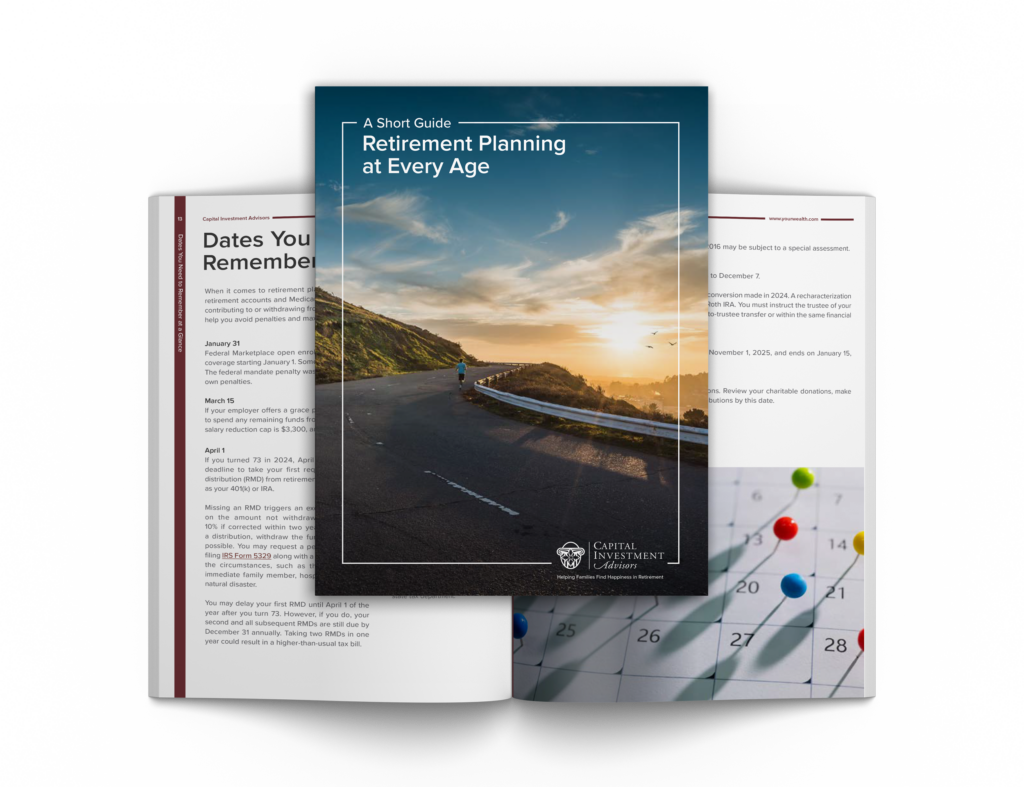As you plan your financial future and seek out additional income sources as you approach retirement, we suggest you take a look at our firm’s preferred investment strategy, income investing.
Income investing is a way to generate consistent cash flow from your liquid investments.
As investment advisors, we constantly answer questions about a wide variety of investment and retirement strategies. Everyone wants a strategy that makes them feel confident about investing in the future, especially during economically challenging times.
How Does Income Investing Work?
What income investing really means is that you are collecting the cash flow from dividends from stocks, interest from various types of bonds and distributions that come from a variety of investments (investments that pay distributions but don’t fit neatly in the stock or bond category). Adding the three of these together typically gives you a personal portfolio yield.
Income investing focuses on the production of a steady cash flow from the yield of your stocks, bonds and other investments, which can be reinvested in your portfolio or used to fund your spending needs if you need the cash flow.
This is different from pure growth investing in that pure growth investing relies on a rising stock market to build value. Income investing allows you to diversify your investments, collect a steady stream of income along the way, and (most likely) see a steady increase in the value over time.
This can be a confusing concept, so our team typically uses the “bucket system” to explain how it works.
Bucket 1 – Bonds – Income. Contributions to this bucket are invested in various types of bonds — Treasury, corporate, municipal, high yield, TIPS, international, and floating rate. They will typically provide you with a steady interest income. A well-diversified bond portfolio is generally a good strategy to protect your principal, as well. To maximize your return over time you’ll most likely want to diversify within this bucket.
Bucket 2 – Stocks – Growth. This bucket will hold different stocks for people in different stages in life. If you’re under 60 and still working, you should consider owning growth stocks. These are shares in companies that have large growth rates, but they usually don’t pay much of a dividend. Their focus is on capital appreciation through growth in their revenue and earnings.
On the flip side, if you are a retiree, you should probably focus more on dividend-paying stocks. These are companies that aim to give you some capital appreciation and pay you a nice dividend along the way.
Bucket 3 – Variety of Investments – Alternative Income. This is the smallest bucket of the three. It holds investments that don’t fit neatly into either of the above buckets. For example, this bucket holds investments in energy royalty trusts (publicly traded oil and gas trusts), real estate investment trusts (REITs), preferred stocks, and MLP stocks (pipeline and energy storage companies). These are traded like normal stocks on the open exchanges, but they don’t pay traditional dividends or interest… they pay distributions.
The idea of using the bucket approach to income investing is that you can diversify your liquid savings and use them to either supplement your income in retirement or reinvest the portfolio’s income to accumulate more wealth over time.
All that being said, this is obviously not the only functional investment method in the world, and investing never comes with a guaranteed return. However, we’ve found it to be a tried-and-true method for those who are looking for a low cost, transparent, and consistent investment strategy built for the long-run.
Disclosure: This information is provided to you as a resource for informational purposes only. It is being presented without consideration of the investment objectives, risk tolerance or financial circumstances of any specific investor and might not be suitable for all investors. Past performance is not indicative of future results. Investing involves risk including the possible loss of principal. This information is not intended to, and should not, form a primary basis for any investment decision that you may make. Always consult your own legal, tax or investment advisor before making any investment/tax/estate/financial planning considerations or decisions.












